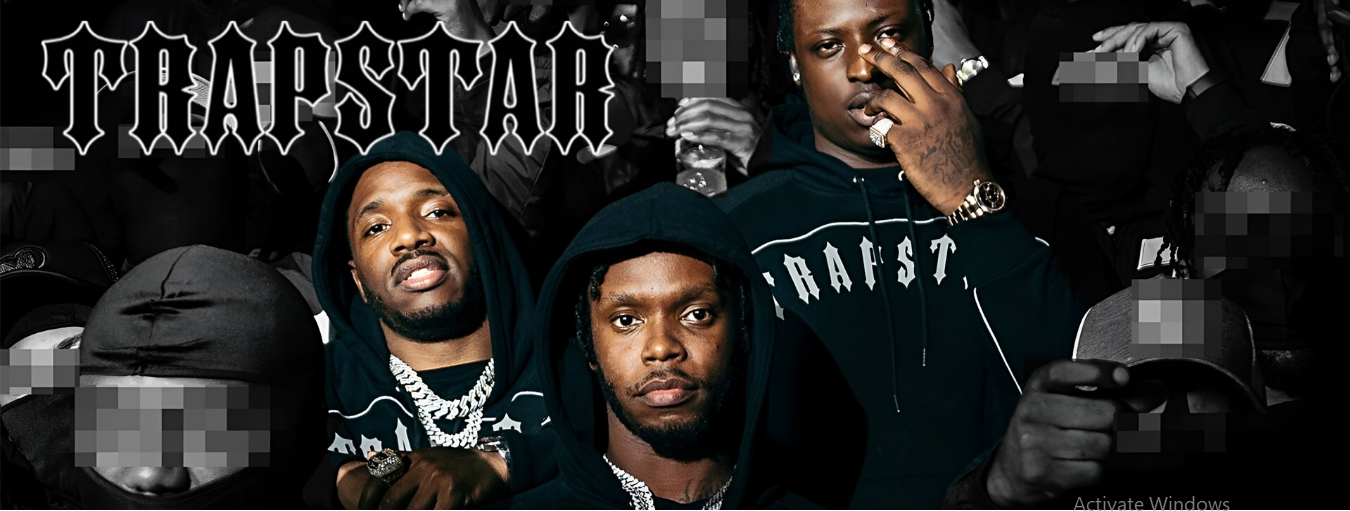The Evolution of Trapstar: From Underground to Mainstream
Trapstar didn’t begin in some big office with rich people and fashion experts. It started quietly on the streets of West London—like a hidden gem that only a few people noticed at first.What started as a few bold t-shirts made by three friends quickly turned into something much bigger. Today, Trap star is worn by global celebrities and loved by people across the world, but the brand never lost its street-born roots. This is the story of how Trapstar went from local legend to global streetwear force.
How Trapstar Started with a Simple Idea
In the early 2000s when three friends from West London—Mikey, Lee, and Will—decided to turn their love for fashion, music, and bold self-expression into something real. They didn’t have big plans or investors. They had ideas, grit, and access to a heat press. The very first Trapstar shirts were made in people’s bedrooms and basements, then sold out of car trunks and carried around in backpacks. But they weren’t just shirts—they were statements. Each design carried a sense of mystery, with slogans like “It’s a Secret,” meant to spark curiosity and build underground hype. The name itself mixed two worlds: “trap,” symbolizing the hustle of street life, and “star,” the dream of making it big.
They weren’t trying to sell clothes—they were building a movement. And it worked.
Why the Streets Embraced Trapstar First
Unlike many brands that rely on paid ads or retail stores, this fashion label grew through real-life connections. London’s grime music scene, with its rough beats and real energy, was one of the first to show love to Trap star. Artists like Giggs and Skepta wore Trapstar before it was trendy. There was something about the look, the mood, the message—it wasn’t trying to please the fashion world. It was speaking directly to the people who lived the culture.
Trapstar’s clothing wasn’t just stylish—it said something. It gave people a way to show who they were without saying a word. That’s what made it powerful. Word spread fast. Shirts and hoodies became harder to find. The mystery deepened. And that’s how the hype really started.
Celebrity Shout Outs and the Roc Nation Boost
Trapstar was already hot in London, but everything changed when celebrities from across the Atlantic started taking notice. Rihanna was spotted wearing it. Cara Delevingne too. Then came Jay-Z—the game-changer. In 2013, his company Roc Nation officially partnered with this streetwear, giving them access to global platforms without stripping them of their identity.
This wasn’t a sellout move—it was a level-up. Trap star stayed in control of the creative direction while gaining the reach to grow. Suddenly, a brand that once only sold in secret locations was shipping worldwide. But the message stayed the same: stay mysterious, stay bold, stay you.
Trapstar as a Voice for UK Streetwear
Before Trapstar, most famous streetwear brands came from the U.S.—Supreme, BAPE, Stüssy. But they changed that. It gave UK youth something of their own to represent. The designs stayed heavy, with gothic fonts, bar-style logos, and dark color schemes that reflected the reality of the city. You weren’t just wearing a hoodie—you were wearing London.
Trapstar showed the world that British streetwear could stand tall next to any American giant. And it opened the doors for other homegrown brands like Corteiz and Broken Planet to rise.
Why Trapstar Drops Sell Out So Fast
One reason Trapstar feels so exclusive is because of how they release products. They never make huge batches. When a drop hits, it’s limited—and it sells out fast. That’s part of the appeal. If you get your hands on a Trapstar Tracksuit, you’re in a small group. It’s not just clothing; it’s a collectible.
This method—drop culture—was ahead of its time. Long before it became a buzzword, Trapstar understood that less is more. They made scarcity part of the brand’s DNA. And even now, with all their success, they haven’t changed that formula.
Staying Real While Going Global
As the label expanded, the fear was that it would lose touch with its underground vibe. But they’ve managed to grow while staying real. Their newer collections include puffer jackets, cargo sets, and full tracksuits—but the attitude behind each piece is still pure Trapstar. The energy is rebellious, the style unapologetic. You don’t see Trapstar trying to fit in—they still stand out.
And they continue to collaborate with artists and creators who match their message. Whether it’s UK rappers, athletes, or local talents, Trap star keeps the community close. That’s why the brand feels so grounded, even while it’s known worldwide.
Trapstar’s Global Influence Today
Now, Trapstar is worn from London to Los Angeles, from Paris to Tokyo. It’s more than just popular around here—it’s something people all over the world are a part of. But what makes it special is how it got there: not by copying trends, not by chasing fame, but by building something real from the ground up.
People wear Trap star not just because it looks good, but because it means something. It stands for hustle, survival, and self-expression. And even if you’re wearing it on a runway, it still whispers the same message: “This is for the ones who came from nothing and made it loud.”
The Legacy of Trapstar
Trapstar proved you don’t need to follow the rules to win in fashion. You can be bold, be quiet, be mysterious, be loud—but most importantly, be real. From secret t-shirt drops in London to selling out collections across the globe, Trapstar stayed true to its core.
And that’s what makes it legendary.

